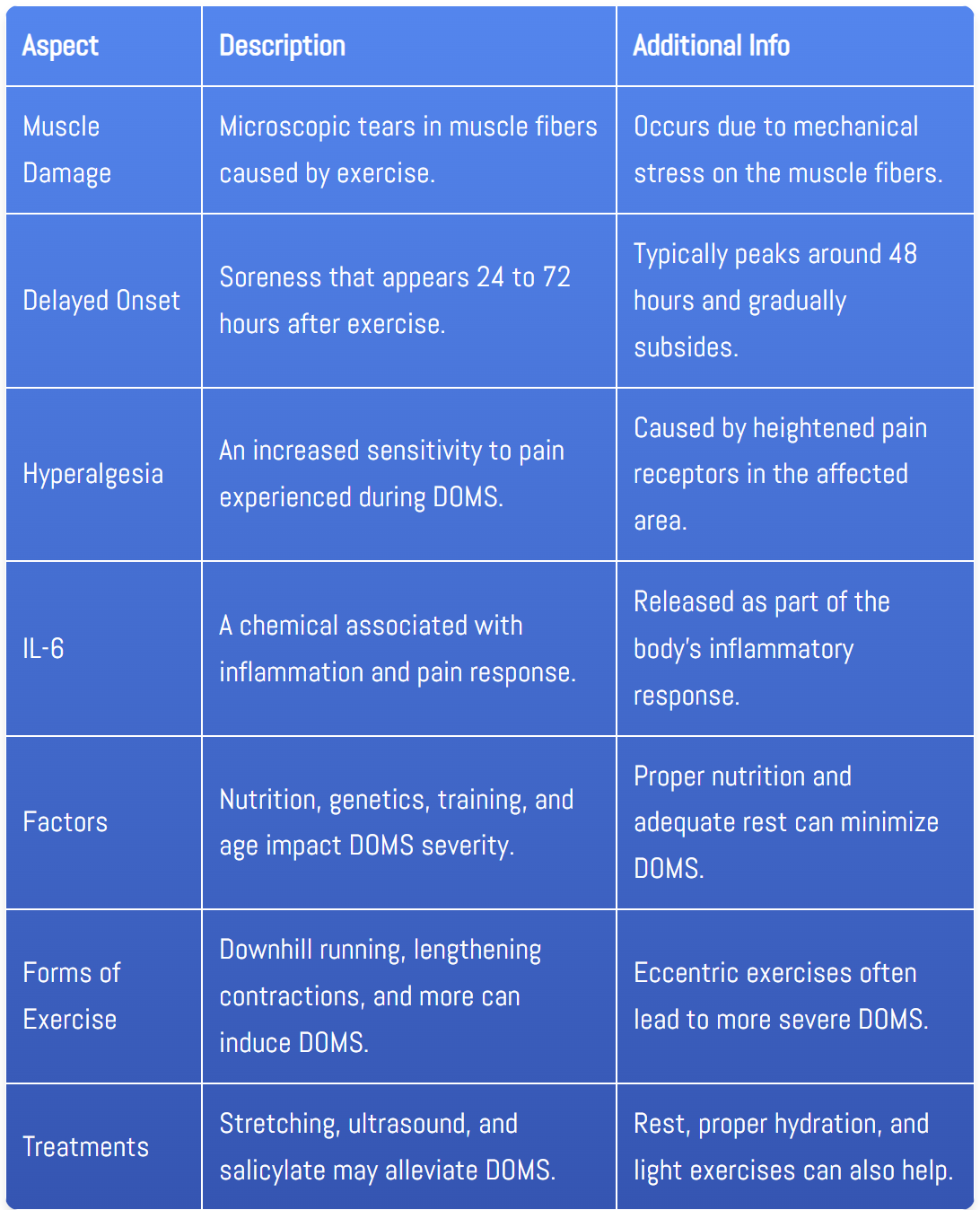Look, you crushed leg day. You felt like a Grecian war god walking out of the gym. But then—BAM!—48 hours later, your quads feel like they were hit by a truck. That’s DOMS (Delayed Onset Muscle Soreness), and it’s brutal.
Why the Pain Hits Like a Freight Train (But Late)
The soreness doesn’t hit immediately because DOMS isn’t about lactic acid (that’s a myth). Instead, it’s microscopic muscle damage from intense eccentric contractions—think squats, lunges, or descending stairs like a baby giraffe.
| DOMS Breakdown | What Happens? |
|---|---|
| Primary Phase | Your muscles micro-tear due to high force, especially from eccentric movements (e.g., quadriceps during squats). |
| Secondary Phase | Inflammation kicks in, causing pain, stiffness, and swelling—peaking at 24-72 hours post-workout (Torres et al., 2012). |
Why It’s Worse After Leg Day
Leg workouts trigger DOMS more intensely because:
- Bigger muscles = more damage (quads, glutes, hamstrings).
- Eccentric load is high (squats, RDLs, leg presses).
- Blood flow is sluggish post-exercise (Vaile, 2008c).
- New routines wreck you (Kuligowski et al., 1998).
How to Recover Without Feeling Like a Stiff Board
You can’t “cure” DOMS, but you can reduce it:
Science-Backed Recovery Methods
| Method | Effectiveness | Why It Works |
|---|---|---|
| Cold Water Immersion (CWI) | High | Reduces inflammation & pain (Rowsell et al., 2009). |
| Foam Rolling | Moderate | Improves blood flow, reduces stiffness (Wheeler et al., 2018). |
| Light Activity (Walking, Cycling) | Moderate | Boosts circulation, speeds healing. |
| Massage Guns & Vibration Therapy | Mixed | Some studies show benefits (PPT meta-analysis, 2021). |
| Compression Gear | Low | Some find relief, but research is inconclusive. |
| Stretching? | Low | Does NOT reduce DOMS (McHugh et al., 2012). |
DOMS: The Cost of Growth
Your muscles get wrecked, then rebuild stronger. That’s how hypertrophy works. You CAN train with DOMS—but at lower intensity. If you can’t squat down to the toilet without grabbing the sink, you might want a rest day.
Final Thought: Don’t Be Soft
- Leg DOMS sucks—but it’s a sign you’re growing.
- Want less pain? Gradually increase workout intensity instead of going from 0 to Goku mode overnight.
- Recovery is a tool—not an excuse to skip leg day.
Go lift. Be sore. Repeat.

